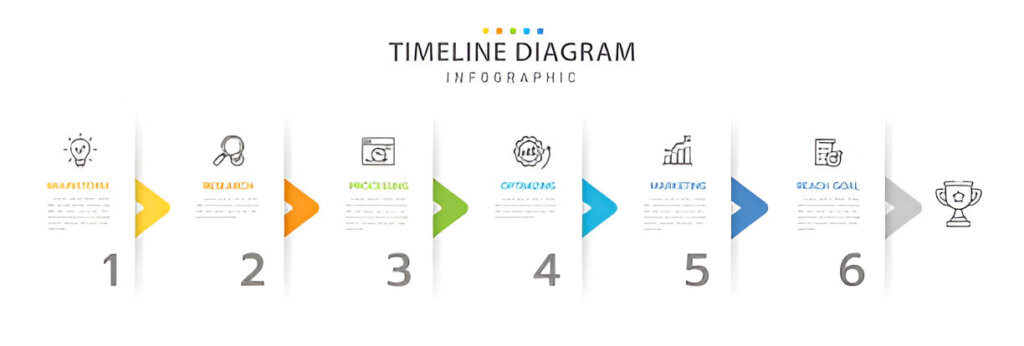
Business Development Plan: Guide to Sustainable Growth
Learn how to create a charming business development plan to drive heightening, increase profits and outperform competitors. Step-by-step guide inside!
A well-structured business development plan is essential for any company looking to expand its market reach, increase revenue, and build long-term success. Whether you’re a startup or an established business, having a clear strategy ensures you stay ahead of competitors and adapt to changing market trends.
In this article, we’ll break down the key components of an effective business development plan, providing actionable steps to help your business grow sustainably.
What is a Business Development Plan?
A business development plan serves as a strategic roadmap, detailing how an organization will expand its market presence, drive revenue, and secure long-term success. It goes beyond day-to-day operations to focus specifically on growth initiatives like market penetration, strategic alliances, and customer acquisition strategies. It includes market research, sales strategies, partnerships, and customer acquisition techniques. Unlike a traditional business plan, which focuses on overall operations, a business development plan is growth-centric.
Key Components of a Business Development Plan
1. Market Research & Analysis
Before expanding, you need to understand your market. The business development plan Conduct thorough research to identify:
- Target audience (demographics, pain points, buying behavior)
- Competitor analysis (strengths, weaknesses, opportunities)
- Industry trends (emerging technologies, regulatory changes)
Example: If you’re in SaaS, analyze competitors’ pricing models and customer feedback to refine your offering.
2. Define Clear Business Goals
Establish SMART goals (Specific, Measurable, Achievable, Relevant, Time-bound) to guide your growth strategy. Examples include:
- Increase revenue by 20% in 12 months
- Expand into two new markets within 18 months
- Secure three strategic partnerships this year
3. Develop a Sales & Marketing Strategy
Your business growth depends on how well you attract and retain customers. Key strategies include:
- Lead generation (SEO, content marketing, paid ads)
- Sales funnel optimization (conversion rate improvements)
- Customer retention (loyalty programs, personalized offers)
Pro Tip: Use CRM tools (HubSpot, Salesforce) to track leads and customer interactions.
4. Strategic Partnerships & Networking
Collaborating with other businesses can accelerate growth. Consider:
- Joint ventures (co-marketing campaigns)
- Affiliate programs (incentivize referrals)
- Industry alliances (trade associations, networking events)
5. Financial Planning & Investment
Growth requires capital. Outline:
- Funding sources (loans, investors, bootstrapping)
- Budget allocation (marketing, R&D, hiring)
- ROI projections (expected revenue vs. expenses)
6. Technology & Innovation
Leverage technology to streamline operations and improve customer experience:
- Automation tools (Chatbots, email marketing automation)
- AI & Data Analytics (predict customer behavior)
- Digital transformation (cloud computing, cybersecurity)
7. Risk Management & Contingency Planning
Identify potential risks (economic downturns, supply chain issues) and create backup plans.
Steps to Create Your Business Development Plan
- Conduct a SWOT Analysis (Strengths, Weaknesses, Opportunities, Threats)
- Set short-term & long-term goals
- Identify key performance indicators (KPIs)
- Assign roles & responsibilities
- Monitor progress & adjust strategies
Business Development: Definition and Key Concepts
Business development (BD) is the process of creating long-term value for a company by identifying new opportunities, building strategic relationships, and driving sustainable growth. Unlike sales, which focuses on closing deals, business development takes a broader approach—encompassing market expansion, partnerships, and innovative strategies to enhance profitability.
Why is Business Development Important?
- Drives revenue growth by exploring untapped markets and customer segments.
- Strengthens competitive advantage through strategic alliances and innovation.
- Enhances brand reputation by fostering long-term business relationships.
- Improves scalability by optimizing processes and entering new markets.
Business Development vs. Sales vs. Marketing
While often used interchangeably, these three functions differ in focus:
| Aspect | Business Development | Sales | Marketing |
| Primary Goal | Long-term growth & partnerships | Short-term revenue | Brand awareness & lead generation |
| Key Activities | Market research, strategic alliances, mergers & acquisitions | Direct selling, negotiations | Advertising, content creation, SEO |
| Time Horizon | Long-term (months/years) | Short-term (weeks/months) | Mid to long-term |
Key Components of Business Development
- Market Research – Identifying trends, customer needs, and competitors.
- Lead Generation & Prospecting – Identifying and qualifying potential clients/partners.
- Strategic Partnerships – Forming alliances with businesses for shared growth.
- Product/Service Expansion – Innovating offerings to meet market demands.
- Revenue Diversification – Exploring new income streams (e.g., subscriptions, licensing).
Business development fuels sustainable expansion by integrating sales, marketing, and strategic initiatives to capture untapped opportunities. Whether through partnerships, market expansion, or customer acquisition, a strong BD strategy ensures long-term success.
Business Development Skills: Key Competencies for Success
Business development professionals create long-term value by spotting growth opportunities, forging strategic relationships, and securing high-impact deals. Success demands a blend of hard skills (technical expertise) and soft skills (relationship intelligence).To excel in this field, you need a mix of hard skills (technical expertise) and soft skills (interpersonal abilities).
This guide explores the essential business development skills that help professionals thrive in competitive markets.
Core Business Development Skills
1. Strategic Thinking & Market Analysis
- Ability to identify growth opportunities through market research
- Analyzing industry trends and competitor strategies
- Developing data-driven business plans
2. Sales & Negotiation Skills
- Persuasive communication to close deals
- Understanding pricing strategies and contract terms
- Win-win negotiation tactics
3. Relationship Building & Networking
- Building long-term partnerships with clients and stakeholders
- Leveraging LinkedIn and industry events for lead generation
- Maintaining strong client retention through trust
4. Communication & Presentation Skills
- Crafting compelling pitches for investors and clients
- Strong written communication for proposals & emails
- Active listening to understand client needs
5. Financial & Business Acumen
- Understanding profit margins, ROI, and budgeting
- Evaluating business models for scalability
- Knowledge of funding options (VC, loans, bootstrapping)
6. Digital & Tech Savviness
- Familiarity with CRM tools (Salesforce, HubSpot)
- Using data analytics to track performance
- Knowledge of AI and automation in sales
7. Adaptability & Problem-Solving
- Handling market shifts and disruptions
- Creative solutions for client objections
- Managing risks and pivoting strategies
How to Improve Your Business Development Skills?

✅ Take online courses (Coursera, Udemy, LinkedIn Learning)
✅ Attend networking events & workshops
✅ Seek mentorship from experienced BD professionals
✅ Practice pitching & negotiation in real-world scenarios
✅ Stay updated on industry trends and tools
Mastering these business development skills can significantly boost your career and help your company achieve sustainable growth. Whether you’re a startup founder, sales professional, or BD executive, refining these competencies will give you a competitive edge.
Conclusion
A strategic business development plan delivers scalable, sustainable growth. By focusing on market research, partnerships, and financial foresight, you’ll outperform competitors and future-proof your business. By focusing on market research, strategic partnerships, sales optimization, and financial planning, you can ensure sustainable growth. Need help crafting a customized business development strategy? Let’s discuss how we can help your business thrive!